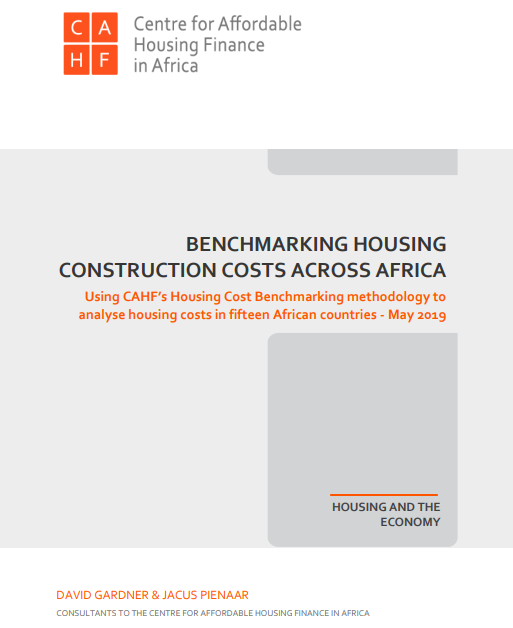Using CAHF’s Housing Cost Benchmarking Methodology to Analyse Housing Costs in Fifteen African Countries

This report presents the findings of a study to implement a standardised methodology to calculate the cost of a benchmarked (standard design and specification) ‘CAHF house’ in thirty cities in fifteen countries across Africa. Countries included in the study are Cameroon, DRC, Ghana, Kenya, Liberia, Malawi, Morocco, Mozambique, Nigeria, Rwanda, Senegal, South Africa, Tanzania, Uganda and Zambia.
Part of CAHF’s larger Housing and the Economy project, this report provides a detailed cost breakdown comprising up to 300 discrete cost elements that meets construction conventions across the continent. This costing framework was completed by professional Quantity Surveyors in each selected country and consolidated into a centralized database for comparison. (An online dashboard enables further analysis of the data).
Total costs of the ‘CAHF house’ are aggregated from the basic cost elements of housing: land, infrastructure, compliance, construction, materials and labour, and other indirect costs of development. Further, each unique cost element is categorized into a Standard Industrial Classification (SIC) sector and sub-sector, and assigned a basic labour or material category, in order that the cost contributions from different types of materials and sectors of the economy can be analysed.
This housing cost benchmarking study shows wide variation in the total costs of the standard ‘CAHF house’ in the thirty cities and fifteen countries. Furthermore, there is significant variation in the composition of costs between the main cost elements. This analysis thus illustrates the difficulty of comparing affordable housing costs across cities, countries and continents without greater methodological rigour regarding how housing is defined and how costs are compiled.
The results of this study have implications for how affordable housing is defined and analysed, and for better understanding the cost drivers of affordable housing in different geographies. Further, analyzing housing costs beyond general figures such as cost per square metre provides a better platform for applied analysis that can ascertain where and how to tackle factors that drive up affordable housing costs in specific countries and cities.


Comments